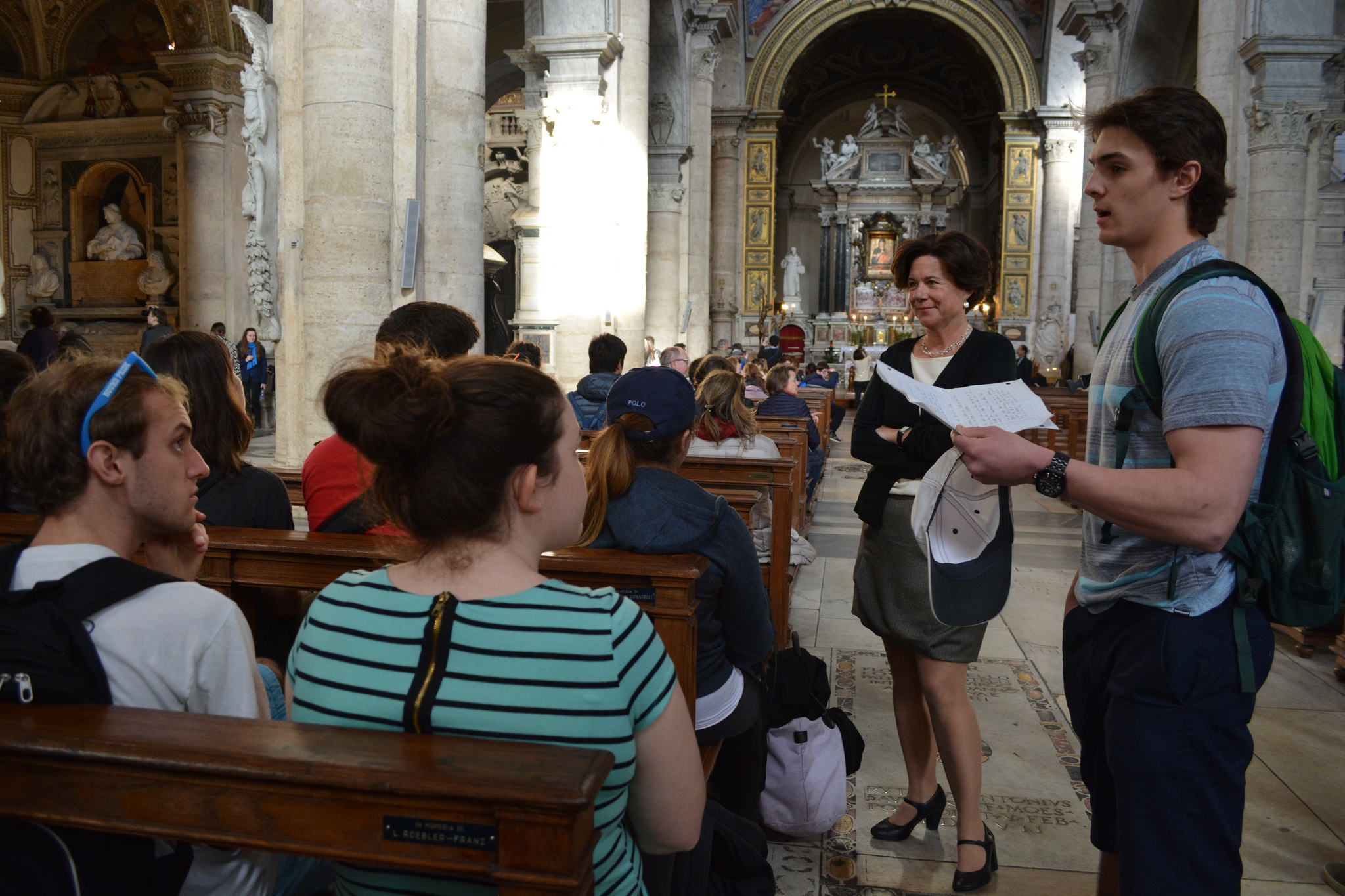Rome: A Living Classroom for Art History

Art is in Professor Daria Borghese’s blood. The Borghese family, known for its elaborate art collection from the 17th century, are her ancestors, and their Roman villa – the Borghese Gallery – is one of the most famous art galleries in the world. As such, she is the ideal choice to teach the “Art of Rome” course offered at Assumption’s Rome Campus – and guide its students through more than 2,000 years of art, history and culture.
There is no better place to learn about art history than Rome. From the Pantheon to the Colosseum to the Borghese Gallery itself, Rome’s place as a timeless hub of artistic excellence has truly earned it the title of “the Eternal City.” The Rome Campus, and Prof. Borghese, aim to take full advantage of that rich history.
“Art of Rome,” taught exclusively at the Rome Campus, meets twice a week, however, meeting times are flexible because of the nature of the course. Rome is the course’s classroom and the city’s amazing monuments and architecture, from churches to museums, are the course materials.
Through excursions to sites of interest throughout the city, students witness extraordinary works of art and gain the ability to place something as beautiful as the statues and murals of Saint Peter’s Basilica into a historical context, providing them with a deeper understanding of the city and culture that inspired such magnificent pieces of art and influenced western civilization.
“The course emphasizes on-site observation, therefore students develop skills of visual analysis and sharpen critical thinking,” Borghese explained.
Under her tutelage, Borghese’s students not only learn about art history, they also develop a new understanding of the subject throughout the semester. “Professor Borghese is a phenomenal professor who creates an interactive environment for students at the Rome campus to learn about the art history of Rome,” Olivia Snow ’18 enthused.
For Vincent Beaulieu ’17, the “Art of Rome” course gave him a completely different experience and insight into art, history and culture than he could have received in the United States. “This course is so different from any course available here or anywhere in the U.S. because our history is so short in comparison to that of Rome,” he noted.
The course also broadened Beaulieu’s perception of art history, enhancing his appreciation of the subject, through exposure to the society and locations that informed it.
“We saw everything from artwork in the Vatican, to small churches and even Michelangelo’s David,” Beaulieu explained. “Going to the Worcester Art Museum or the MET is interesting, but walking the very streets artists walked centuries ago enhances the experience,” Beaulieu said.
Snow agreed. For her, like for many other students studying in Rome, the location of the course made it a unique learning opportunity.
“The opportunities to witness first-hand the monuments that I have learned about in other classes makes the course interactive and helps students to better understand the history of Roman art, buildings and monuments, as well as their location and how they were created,” Snow explained.
“It is a course I will never forget,” she concluded.
